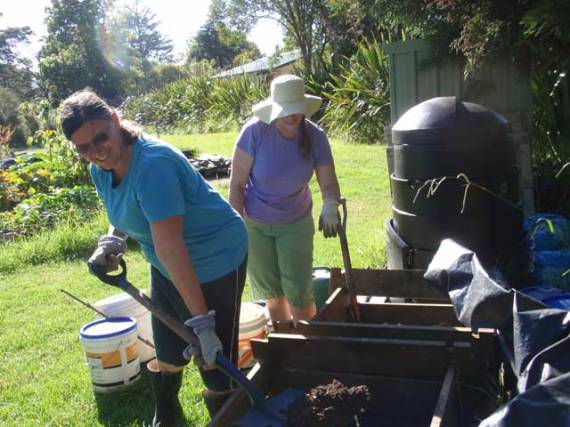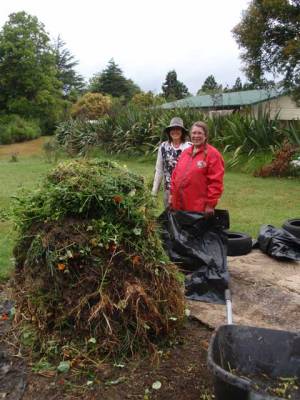It was time to pull out all the expired crops and start preparing the plots for winter crops. We have decided to move the rhubarb into a raised plot because it hasn’t been doing very well. It’s been a very hot dry summer and it probably wasn’t retaining enough water being in-ground. This also was making it difficult to feed it adequately. So, our first task was to add an extra plank around one of the plots so that we could make the walls high enough for the rhubarb.
Fortunately, Huw, from Auckland Council, had managed to get a load of nutrisoil delivered for us in time for the working bee, so we had plenty of soil to fill up the plot. We added some sheep pellets, blood and bone and dolomite. The plan is to move the rhubarb at the next working bee, when the weather is a bit cooler and wetter, to lessen the shock to the plants.
Olga and Selina got busy clearing out the garlic bed (now full of calendula!) and one of the tomato plots. Three other plots had also been cleared and sheep pellets/dolomite/blood and bone were added to all plots.
Karyn and Maximus had started off some more capsicum plants from seeds out of capsicums from the supermarket. The seedlings were planted into the plots where the other capsicums were already producing well. Karyn gave them another dose of garlic/neem oil to keep the bugs at bay. They seem to be prolific producers, a huge improvement on the performance last year.
Nicole and Jacqui made a few other repairs to plots where the timber frames had rotted and given way. We are in urgent need of some good quality untreated timber for maintaining the raised plots.
We were given some coriander, basil and parsley seedlings by Waitakere College when they came to visit the garden earlier this month. The parsley and coriander seedlings were planted into a couple of tyres at the border of the garden by Selina and Karyn. Sheep pellets were added to give them a good start.


















